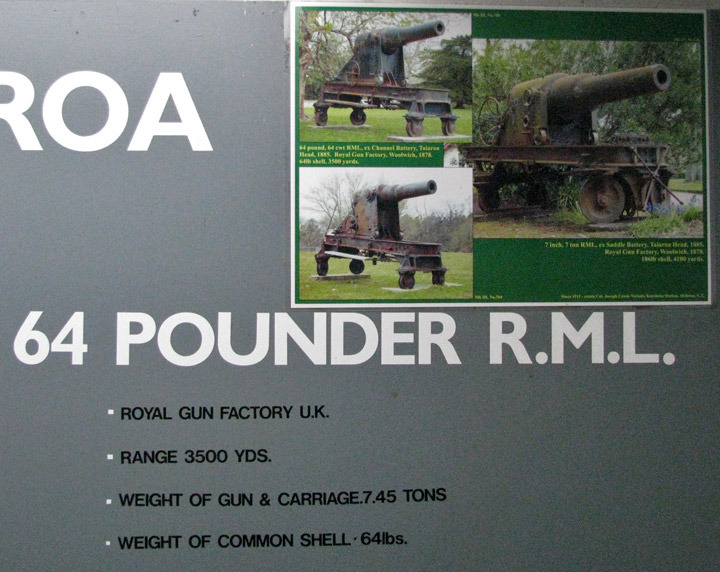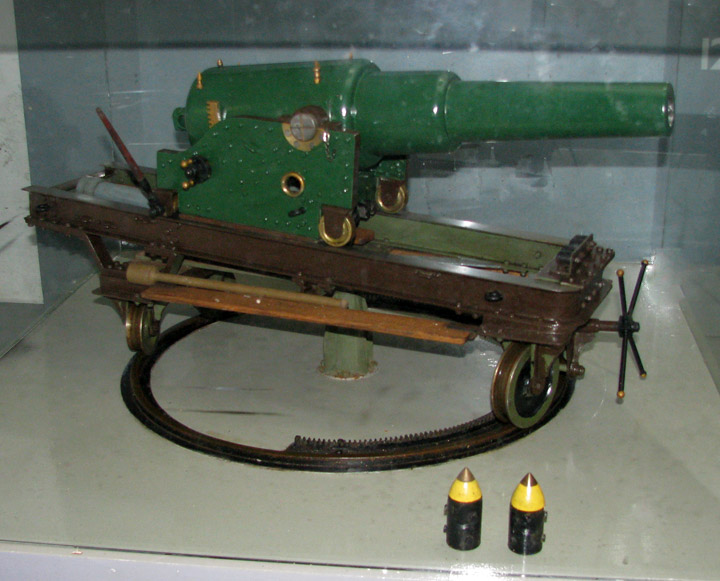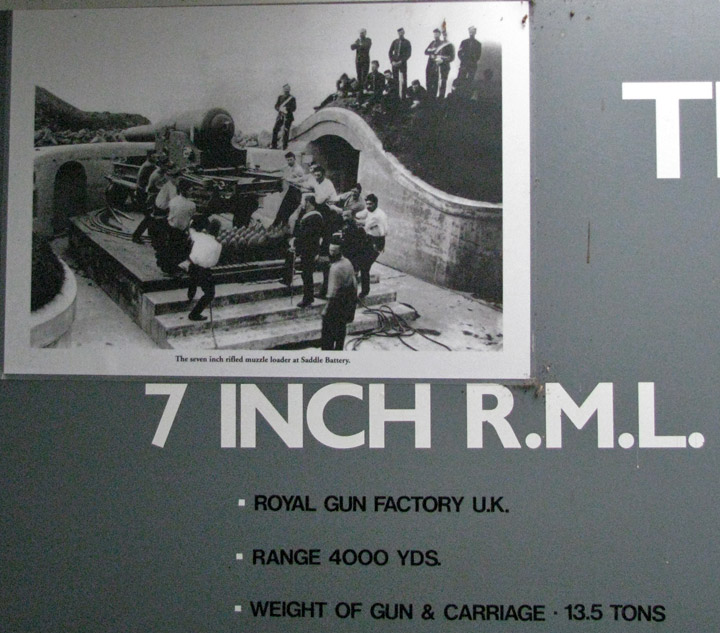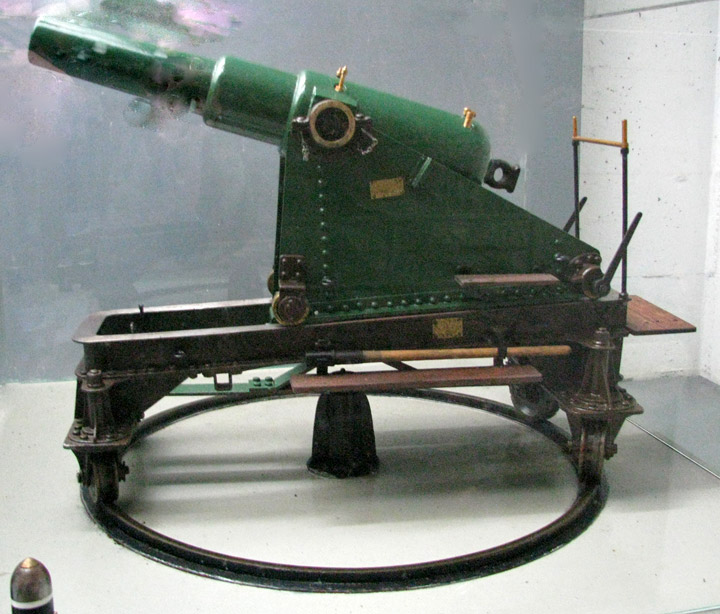

the Fort
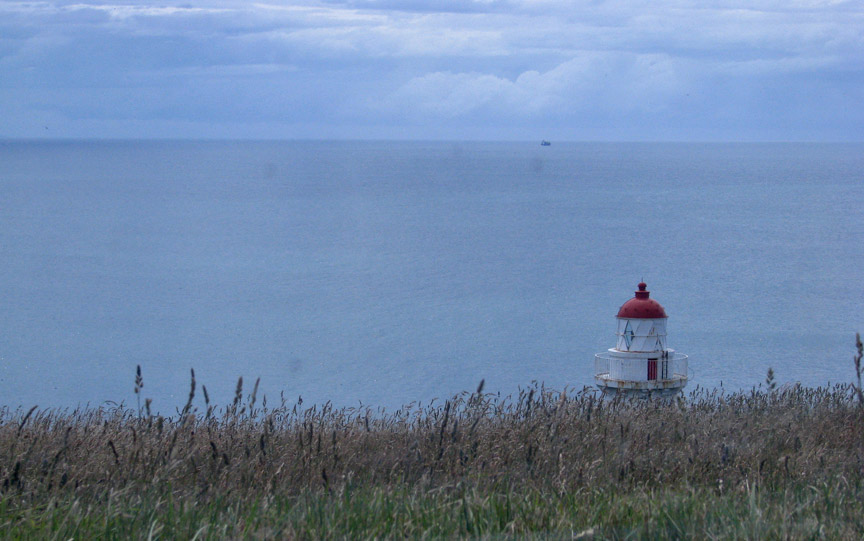
the fort is in the hill in back of the lighthouse
A disappearing gun is a type of heavy (mainly coastal) artillery where the gun retracted or recoiled into a protected pit or bunker after firing. The advantages of the system were concealment and cover from enemy fire, especially during reloading. The concept fell out of use in the first half of the 20th Century due to its complexity, limited advantages, and vulnerability to air attack.
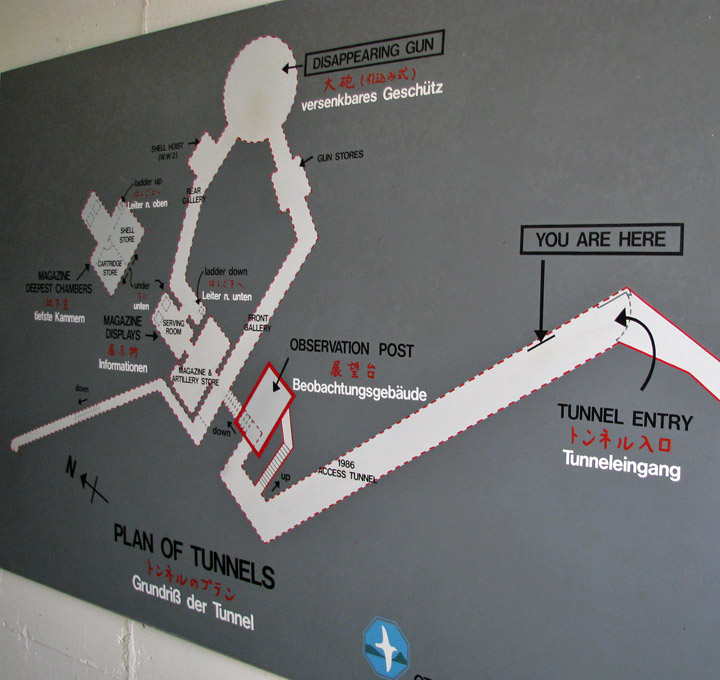
diagram of the emplacement
The gun was usually moved into the pit or protective housing by force of the gun's recoil, and was raised again by releasing energy stored in a hinged counterweight. Some also used compressed air, while a few were built to be raised by steam.
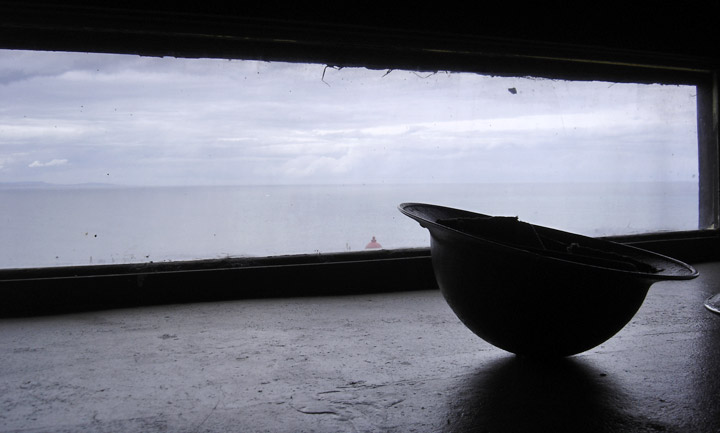
looking out on the ocean

checking the range
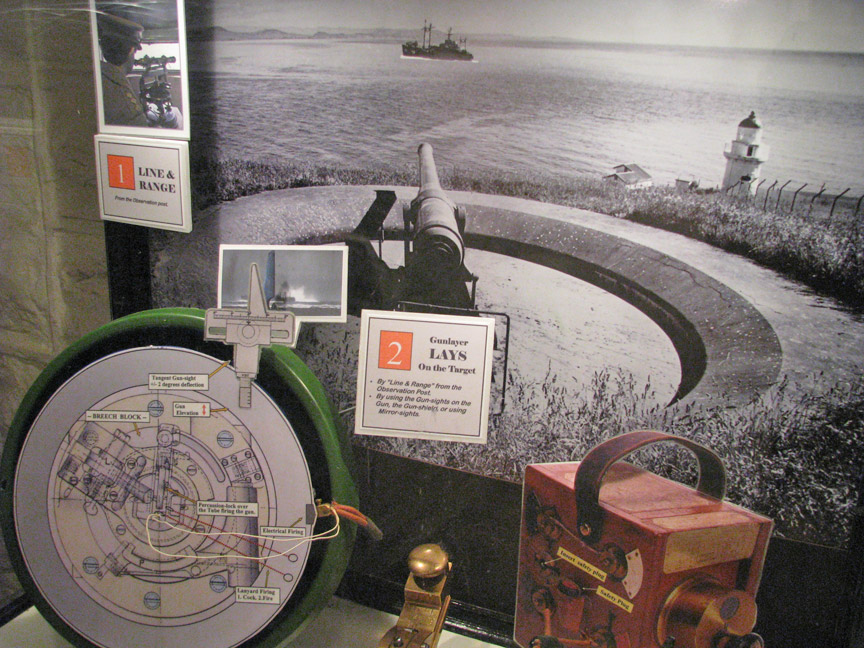
The disappearing carriage had several
principle advantages:
* It afforded the gun crew protection from direct fire by enabling the carriage
to raise the gun to shoot over a solid parapet from a lower position which was
convenient for loading.
* It afforded concealment for the gun positions when not firing.
* It stored the force of the recoil so that the force could be used to raise the
gun back from the loading to the firing position.
* Interposing of a moving fulcrum between the gun and its platform lessened the
strain on the latter and allowed it to be of lighter construction while limiting
recoil travel.

In addition, simple, well protected earthen and masonry gun pits were much more
economical to construct than the previous practice of constructing the standing
heavy walls and fortified casements of a more traditional gun emplacement.
Lastly, the entire battery was hidden from view when not in use, unlike a
traditional fort, enabling ambuscade fire.
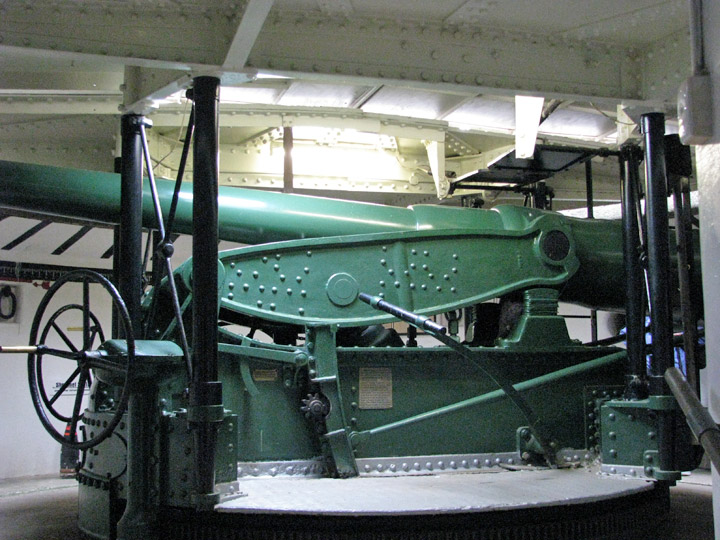
the gun
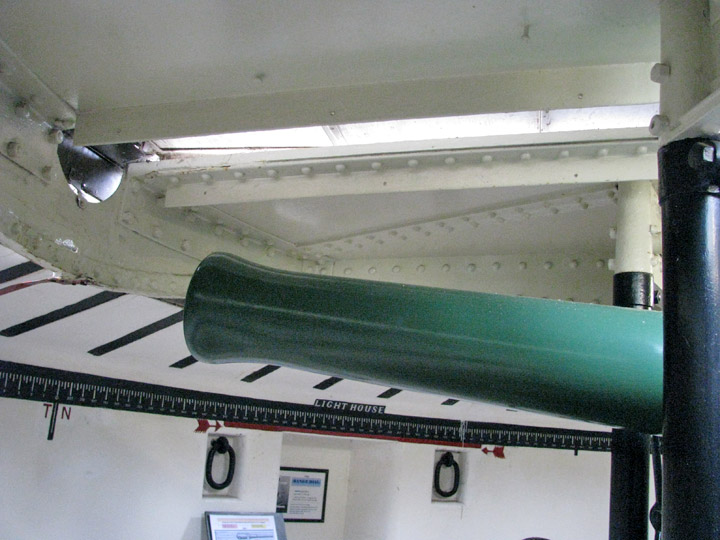
raises through the opening for firing
The disappearing gun had several drawbacks as well:
* The carriage design restricted maximum elevation to under 20 degrees and thus
lacked the necessary range to match newer naval guns entering service during the
early part of the 20th century. The additional elevation gained by mounting the
same gun on a later non-disappearing carriage greatly increased their range.
* The time taken for the gun to swing up and down and be reloaded slowed the
rate of fire. Surviving records indicating a rate of fire of 1 per 1 to 2
minutes on a 8-inch (20 cm) gun, significantly slower than less complicated
guns.
* While adequate for coastal gunnery against slow moving ships, the improvement
in the speed of warships demanded an increased rate of firing. The disappearing
gun was at a disadvantage compared with a gun that stayed in position as one
could not aim or reposition a disappearing gun while it was in the lowered
position. The gunner still had to climb atop the weapon via an elevated platform
to sight and lay the weapon after it was returned to firing position.
* Their relative size and complexity also made them expensive compared with
non-disappearing mounts
Text from Wikipedia
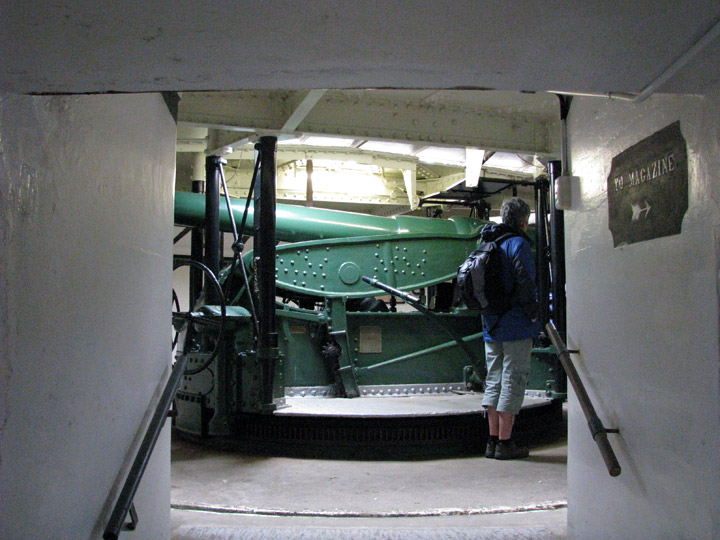
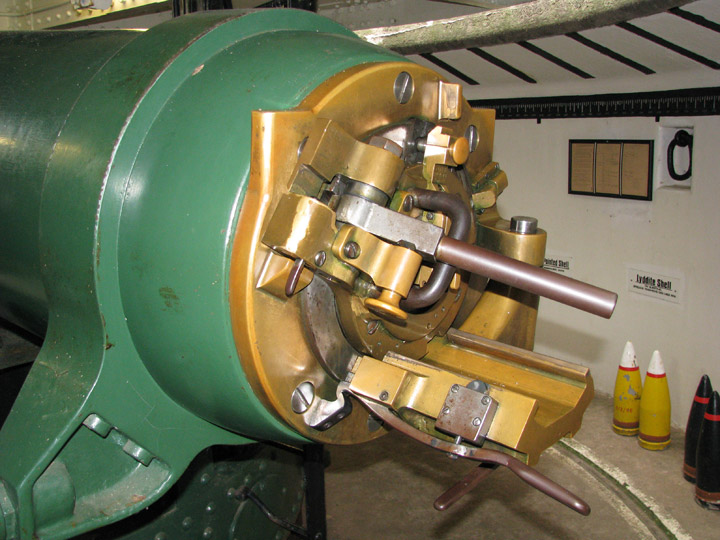
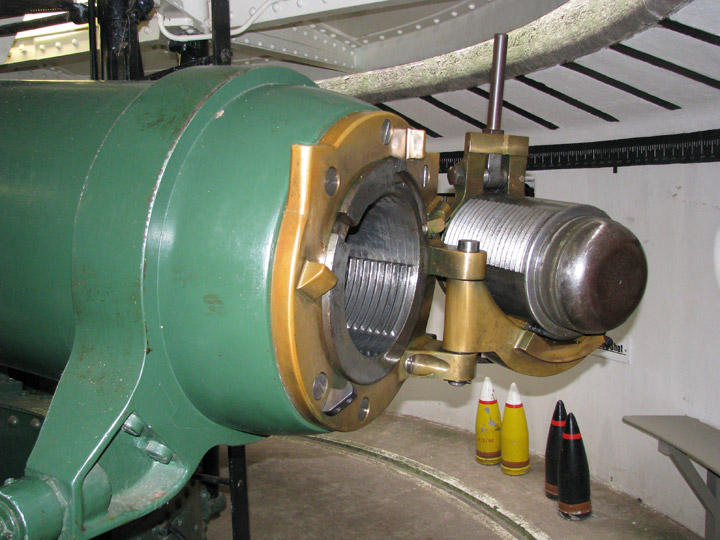
open for loading
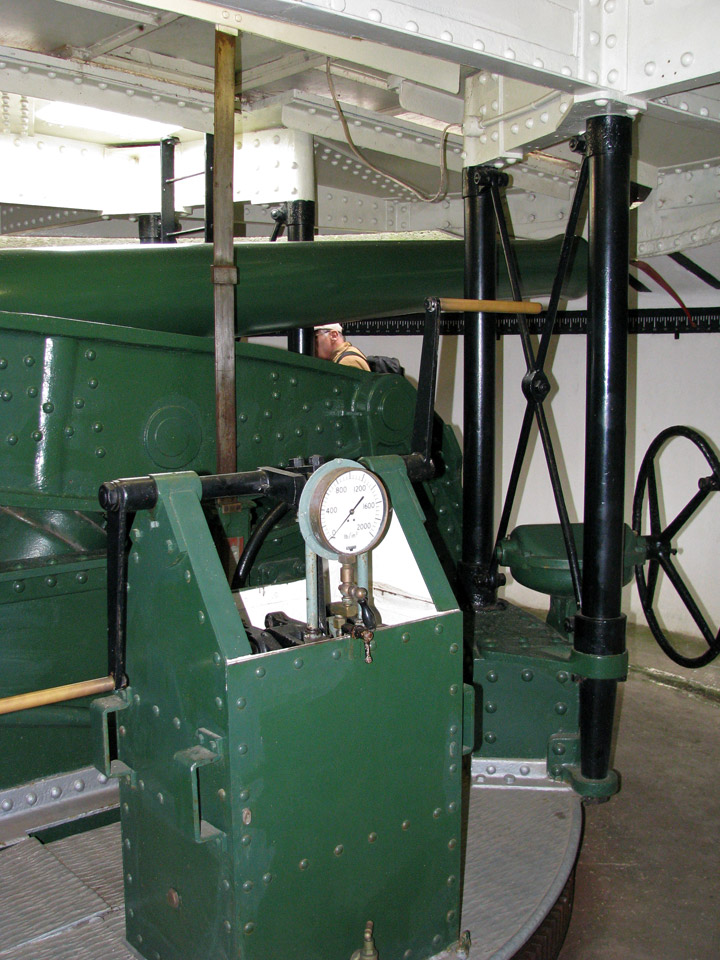
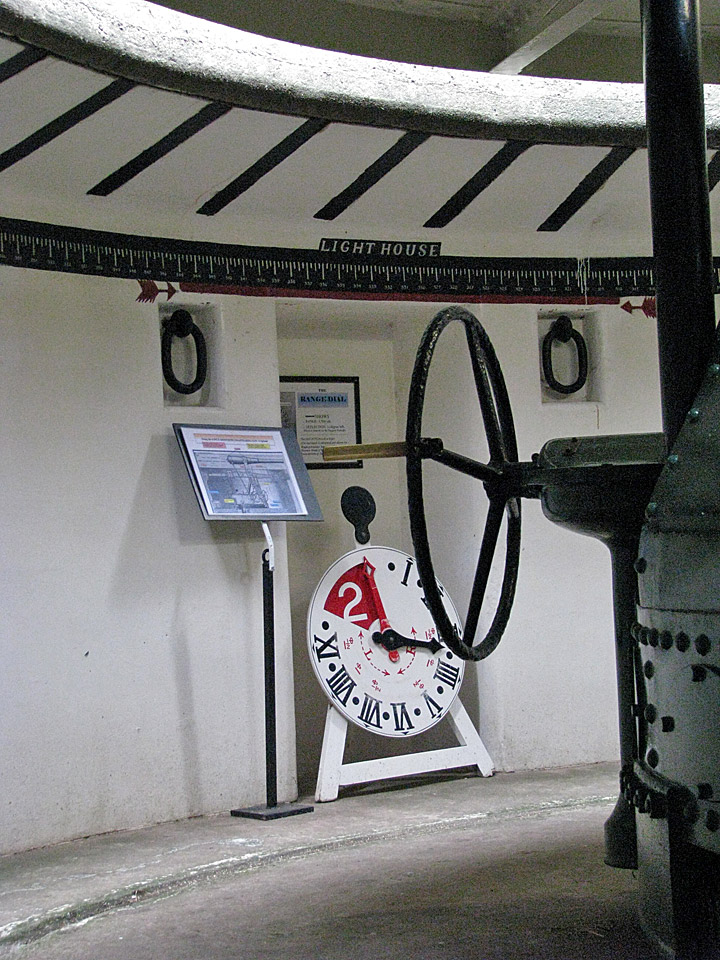
don't aim at the lighthouse
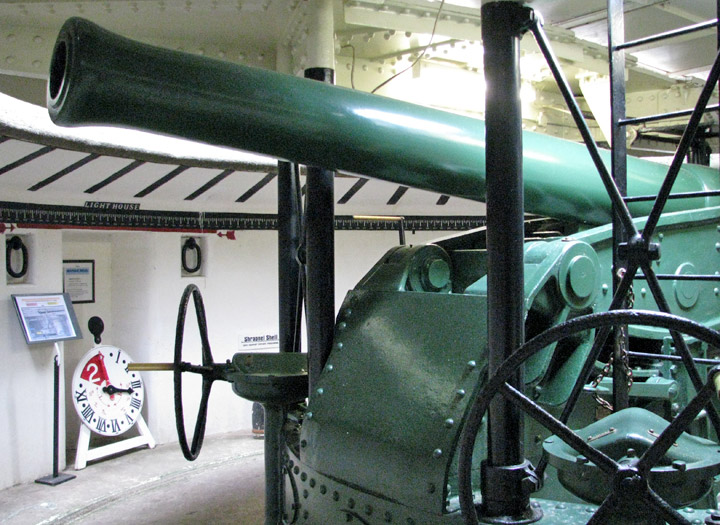
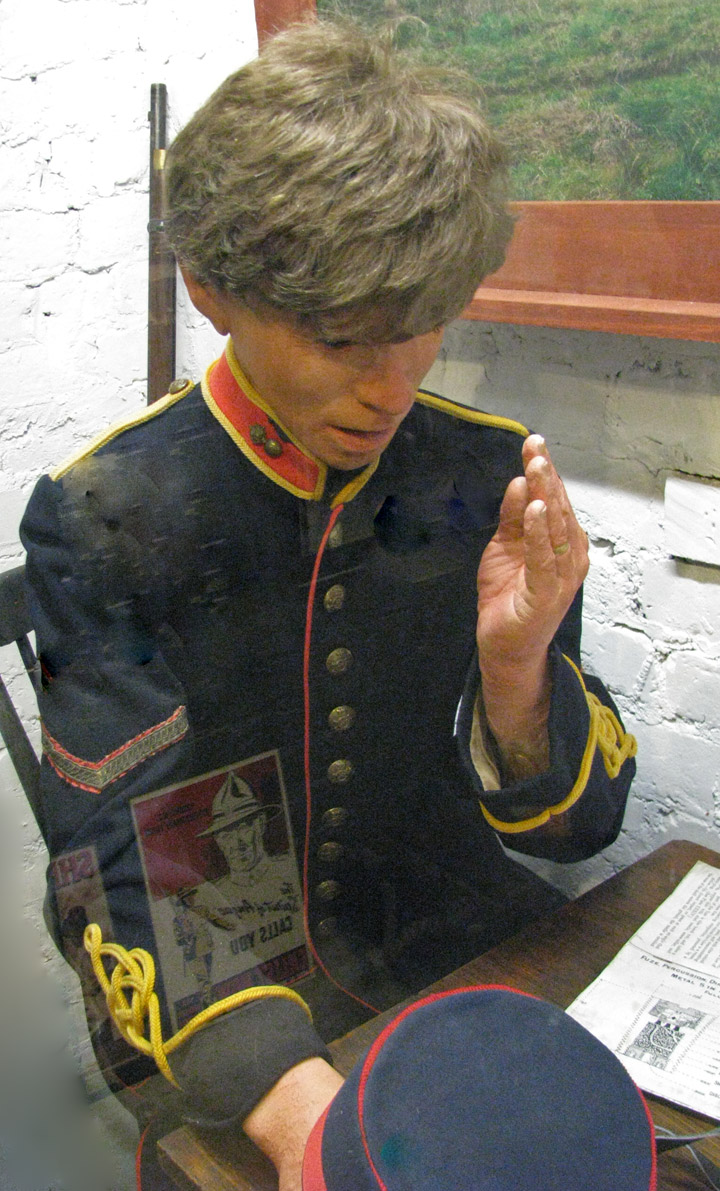
officer
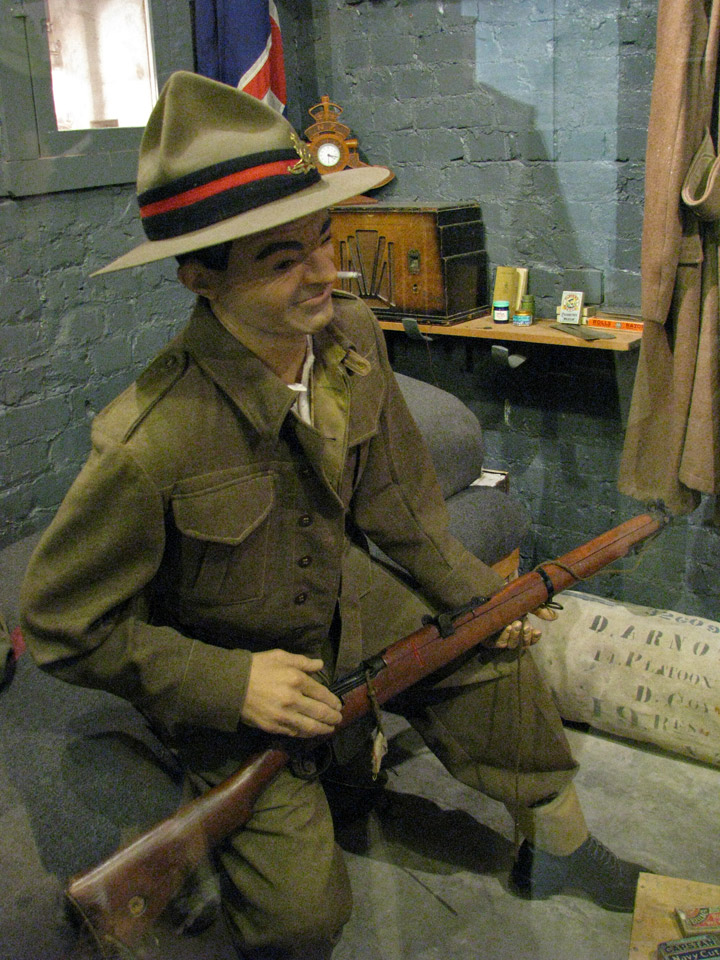
rifleman
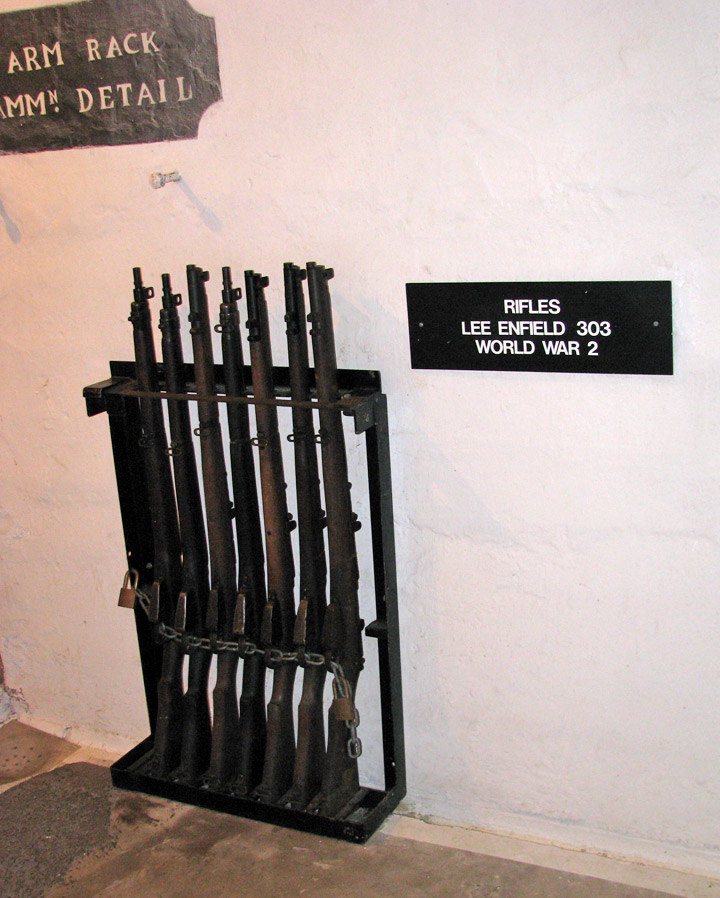
rifles
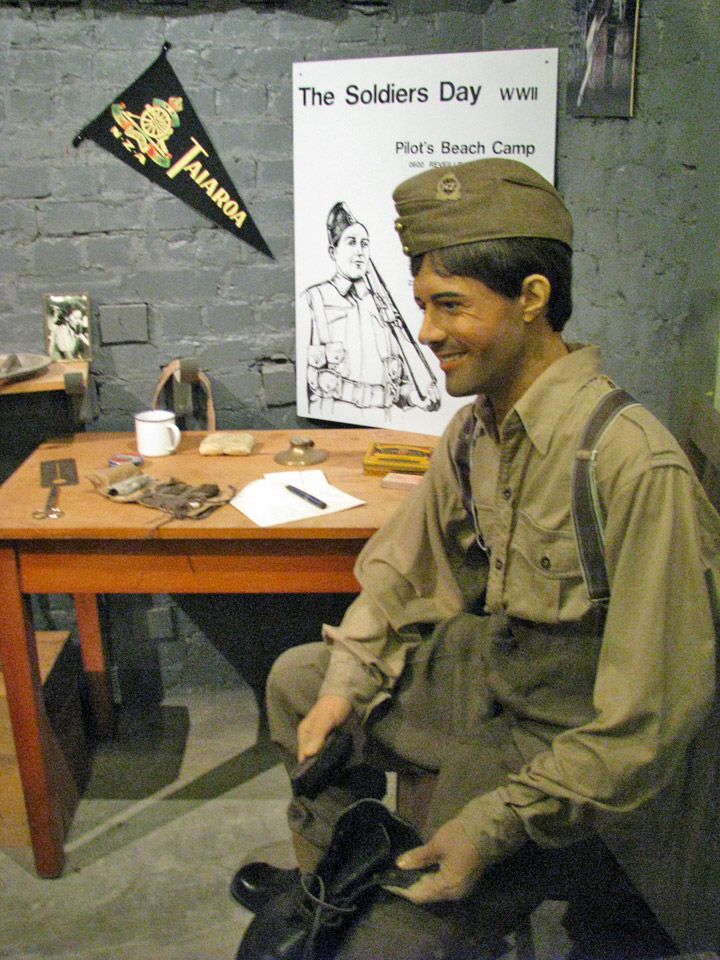
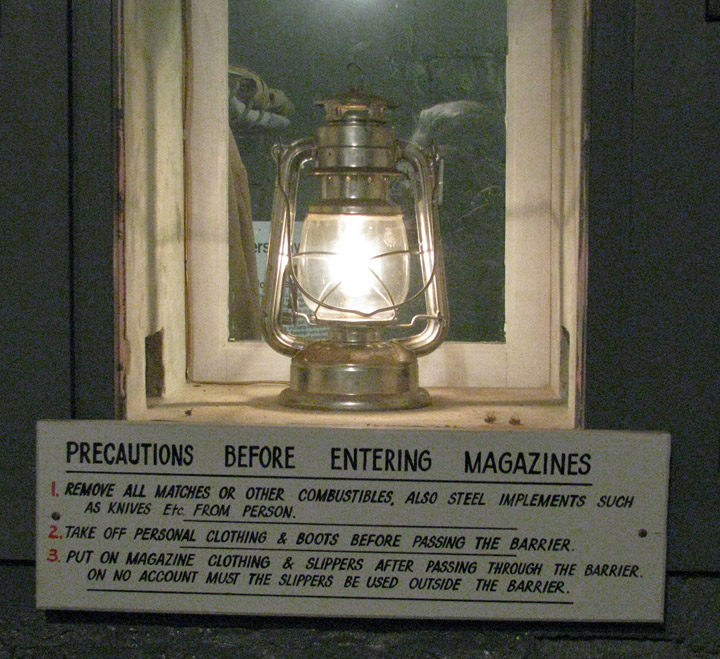
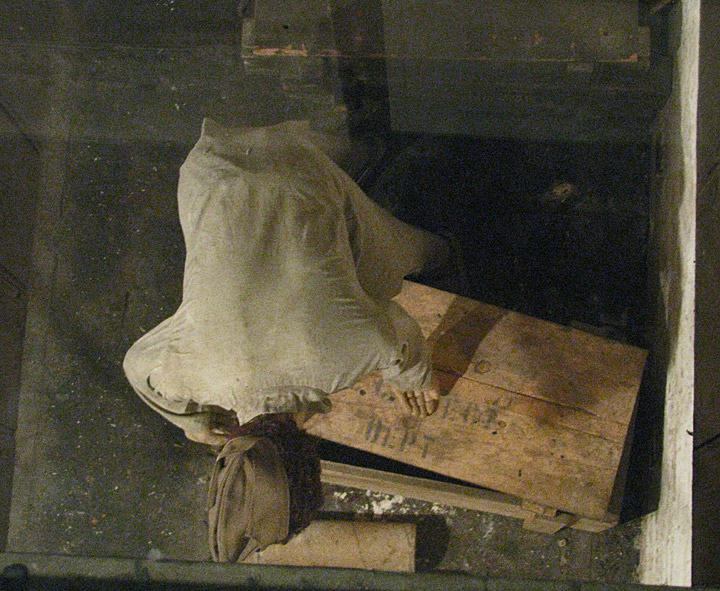
looking down into the magazine
Other guns
